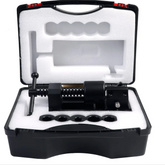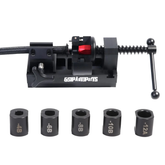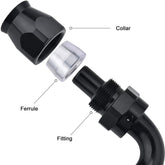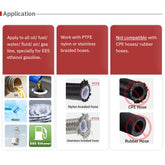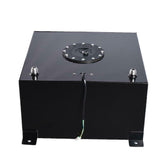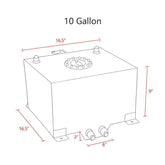Modern automotive engine control systems rely on input from multiple sensors to regulate the performance of the engine and its emissions and other vital functions. When these sensors fail to provide accurate information, drivers may experience increased fuel consumption, drivability issues, emissions malfunctions, and more.
One of the most critical sensors in modern vehicles is the oxygen sensor. Also called an O2 sensor because O2 is the chemical formula for oxygen, the oxygen sensor monitors how much unburned oxygen is present in the exhaust as it exits the engine. By monitoring oxygen levels, the sensor provides a means of measuring fuel mixture. The O2 sensor tells the computer whether the fuel mixture is rich (not enough oxygen) or lean (too much oxygen). Knowing the fuel-air ratio can allow your vehicle's engine to make any necessary changes to keep your car running properly.
All cars produced since 1981 are mandatory to be equipped with O2 sensors. Many newer cars are equipped with multiple O2 sensors due to the ODB-II regulations that apply to cars made in 1996 and later. Some cars have up to four oxygen sensors. Cars manufactured in 1996 and later require a second oxygen sensor located under the catalytic converter. The O2 sensor monitors how efficiently the catalytic converter is operating.
If the sensor after the catalytic converter changes little compared to the reading on the first oxygen sensor, then the catalytic converter is not working properly. A modern vehicle with a V-6 or V-8 engine may have as many as four O2 sensors -- one in each cylinder bank and one after each catalytic converter. If the oxygen sensor in the cylinder block or the oxygen sensor in the catalytic converter fails, your vehicle may experience serious engine problems.
Because oxygen sensors play such a vital role in engine performance and emissions control, you may be wondering when to consider replacing them.
When Should You Replace Your O2 Sensor?
Oxygen sensors are not part of the maintenance items that need to be replaced on a regular basis, such as oil and air filters, so they are usually replaced only when they fail.
Oxygen sensors are a critical component of the fuel and emissions system because they monitor the amount of oxygen in the exhaust and transmit that information to the engine computer, which adjusts the air-fuel ratio accordingly. If the oxygen sensor fails, the engine computer will not be able to properly set the air-fuel balance, which can result in poor fuel economy, increased emissions, and damage to other components such as an overheated catalytic converter.
To the best of our knowledge, no vehicles have warning lights that warn of a failed oxygen sensor. So when your oxygen sensor is bad and needs to be replaced, you have to rely on other vital signs to alert you, such as the check engine light on the dash and increased fuel usage.
Signs You Need a New O2 Sensor
A check engine light coming on can indicate a more serious problem, such as a catalytic converter, or a minor problem like a loose fuel tank cap, so further investigation is always warranted. However, this could indicate a problem with your oxygen sensor or even your exhaust or other parts of your exhaust system. Any repair shop should be able to read what triggered the check engine light, and a mechanic or auto parts store can do this for free.
Other signs that you need a new oxygen sensor include rough idle, misfiring spark plugs, lack of power, stalled ignition, or a significant increase in fuel consumption. These symptoms may also be signs of other problems. Still, the EPA says that replacing a damaged oxygen sensor can improve fuel economy by as much as 40 percent, so if your vehicle is more gas-hungry, it's one to look at. If your vehicle fails emissions tests, a faulty oxygen sensor could also be the cause of this.
The cost of a new oxygen sensor ranges from less than $100 on some models to $300 or more on others, but that doesn't include labor, which can vary from vehicle to vehicle because of where the sensor is located. Therefore, the all-in cost to replace an oxygen sensor can vary widely depending on the type of vehicle you drive.

